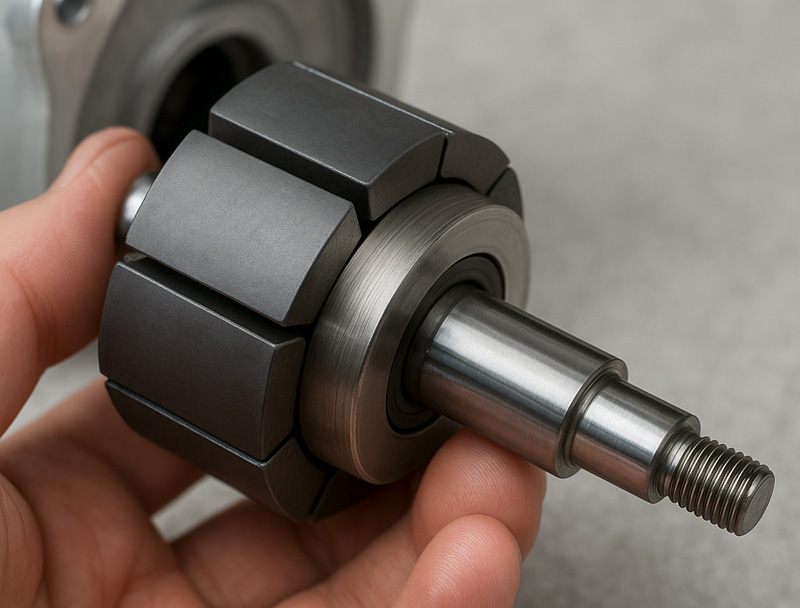In modern industry and daily life, permanent magnet motors are widely used in electric vehicles, household appliances, sports equipment, industrial automation and other fields because of their high efficiency, fast response and small size. So, is the rotor of permanent magnet motor a permanent magnet or not? Are you also more concerned about this issue?
Permanent magnet motor is an electric motor that utilizes permanent magnets to generate a magnetic field inside the motor. It differs from conventional induction motors and excitation motors in that it does not require an additional power source to energize the rotor, but instead relies on permanent magnets mounted on the rotor to provide magnetic flux.
The rotor of a permanent magnet motor is a “rotor containing permanent magnets”, not a “pure permanent magnet rotor”.

In the vast majority of permanent magnet motors, the rotor does consist of or contain permanent magnets. These permanent magnets are usually made of high-performance rare-earth materials (e.g., NdFeB), which are capable of generating a strong magnetic field in a small volume, thereby increasing the energy density and efficiency of the motor.
Common types of rotor magnets: rare earth neodymium arc magnet
However, there can be exceptional constructions, such as permanent magnets on the stator, and although very rare, some special designs of permanent magnet motors do exist in which the permanent magnets are mounted on the stator. In this configuration, the stator contains the permanent magnets and produces a static (or spatially distributed) constant magnetic field. The rotor no longer contains the permanent magnets, but consists of a core and windings (or just a convex pole core). The rotor windings are energized through slip rings (similar to a conventional wire-wound rotor induction motor), or the rotor is simply a toothed and grooved iron core (working on the reluctance principle).
So, in the vast majority of cases (mainstream designs), permanent magnets are mounted on the rotor of permanent magnet motors, but there are also special designs that are mounted on the stator. If you come across a common industrial servo motor, an electric vehicle drive motor, a brushless motor in a fan or pump, etc., then it almost certainly has a rotor made up of permanent magnets.
More rotor magnets are introduced;
What does the magnet on one side of the rotor do?
Number of motor rotor poles and stator poles
 China Neodymium And Ferrite Magnets Manufacturer & Supplier
China Neodymium And Ferrite Magnets Manufacturer & Supplier 


